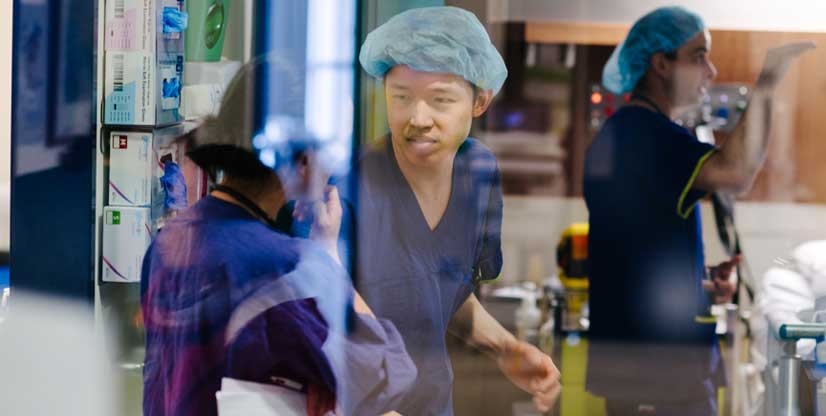About
Austin Health research improves coronary bypass survival by more than 20%
- Home
- About
- Latest news
- Austin Health research improves coronary bypass survival by more than 20%
14 October 2020
Ground breaking cardiac research by Austin Health clinicians could improve the long-term survival rate for hundreds of thousands of patients undergoing coronary bypass surgery around the world each year by as much as 20%.
The study, published this month in the American Heart Association’s flagship journal ‘Circulation’, found patients receiving a coronary graft using the radial artery from the forearm lived longer and suffered fewer complications.
Austin Health researcher Professor David Hare said that, after using the left internal thoracic (mammary) artery from behind the breast bone, surgeons worldwide generally then use leg veins for the other coronary grafts.
“About 90% of all the coronary surgery patients around the world receive vein grafts rather than additional arterial grafts,” Prof Hare said.
“This approach was challenged by clinicians at Austin Health, led by eminent cardiac surgeon, Professor Brian Buxton.
“Our research found patients who underwent bypass surgery using the radial artery, instead of the traditional leg vein or even the right internal thoracic artery, had lower death rates, fewer heart attacks and fewer repeat procedures.
“In the long-term, the survival rates for patients who received a graft from the radial artery was 20% higher on average than for those who received the other grafts.
“There are huge implications for patients globally as a result of these findings.
“We want surgeons and patients everywhere to be aware that it is possible to increase the chances of people’s loved ones living longer after bypass surgery.
“There has been extraordinary interest in these outcomes including from thousands of heart surgeons who tuned into an online presentation with the European Society of Cardiothoracic Surgeons last weekend,” he said.
Prof Hare said the long-term study saw its first patient in 1996 and has followed the outcomes of more than 600 patients over the following 25 years.
“Approximately 90% of bypass surgeries performed in the US and Europe use a graft taken from the saphenous vein in the leg, which has historically been viewed as the easiest option,” he said.
“This research now proves the radial artery is a superior when compared to the alternatives.
“The radial artery is the artery in the forearm that we typically feel when we take our pulse. But the forearm actually has a second artery as a backup system, the ulnar artery, so the radial artery can be used for surgery without impacting hand function.
“The short-term recovery from surgery for patients is also better with less infection at the site of the graft, less swelling and less pain,” Prof Hare said.
Patient, Mario Biondino, underwent coronary artery bypass surgery using the radial artery at the Austin Hospital in 1996 when only 36 years of age and was one of the first patients enrolled in the study.
Mario had blockages in two of the three main coronary arteries but has been able to work in physical roles since his surgery with no symptoms or limitations.
“At the time of my surgery I was working as a spray painter which required me to be active and to use a lot of upper body strength,” Mario said.
“I’ve never had any ongoing heart issues and have never looked back after getting through my recovery. I’m still working in a physical job 24 years later,” he said.
The study ‘Long-Term Results of the Radial Artery Patency and Clinical Outcomes (RAPCO) Trials’ was published in Circulation in October.


